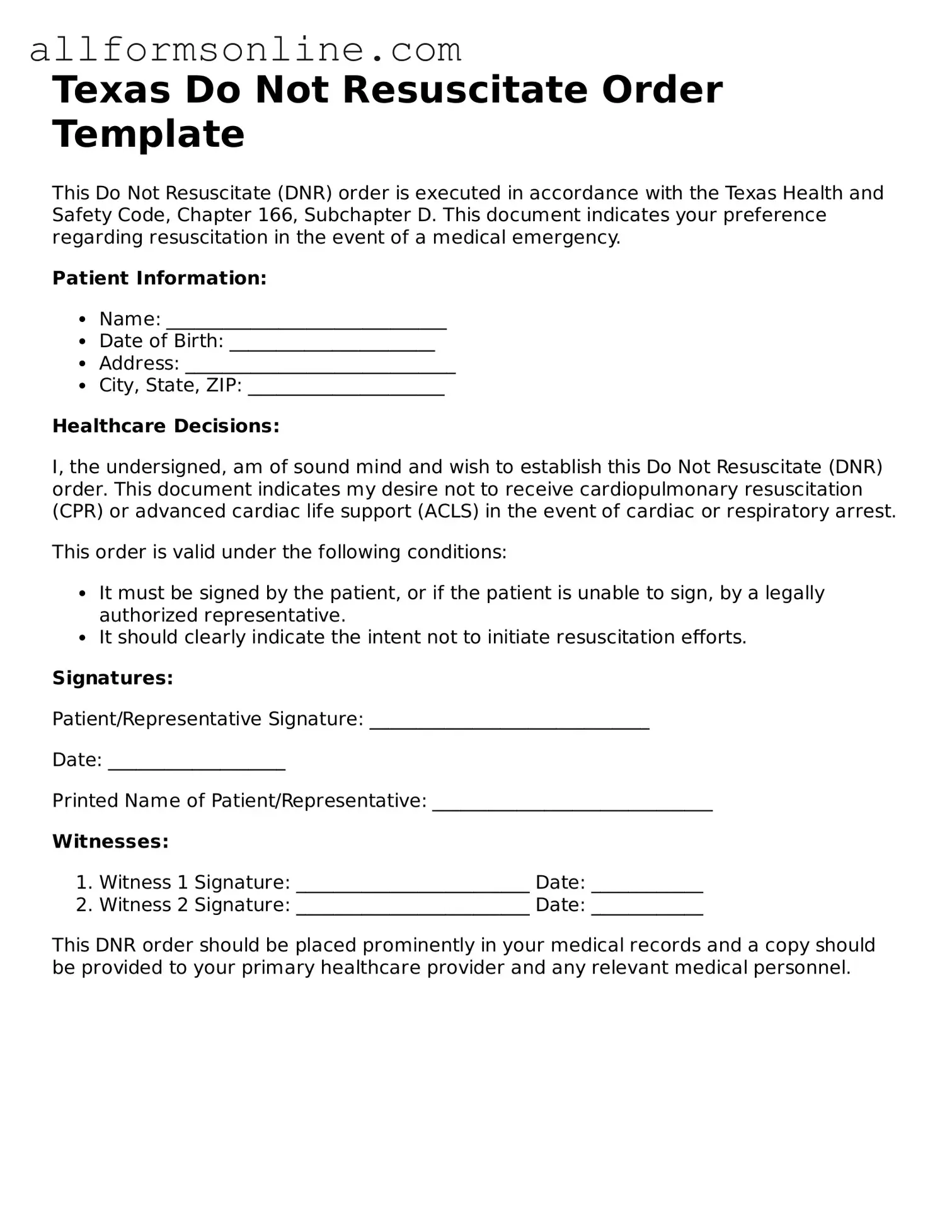What is a Texas Do Not Resuscitate Order (DNR) form?
A Texas Do Not Resuscitate Order (DNR) form is a legal document that allows individuals to express their wishes regarding resuscitation efforts in the event of a medical emergency. This form indicates that a person does not want to receive cardiopulmonary resuscitation (CPR) or other life-saving measures if their heart stops beating or if they stop breathing. It is important for individuals to discuss their wishes with their healthcare providers and family members before completing the form.
Who can complete a DNR form in Texas?
In Texas, any adult who is capable of making their own medical decisions can complete a DNR form. This includes individuals who are at least 18 years old and mentally competent. Additionally, a parent or legal guardian can complete the form on behalf of a minor. It is essential to ensure that the form is signed and dated properly to be considered valid.
How do I obtain a DNR form in Texas?
You can obtain a Texas DNR form from various sources, including hospitals, healthcare providers, or online through the Texas Department of State Health Services website. The form must be filled out completely and signed by the individual or their authorized representative. After completing the form, it is advisable to keep copies in accessible locations, such as with your medical records or with a trusted family member.
What should I do after completing a DNR form?
After completing the DNR form, it is crucial to communicate your wishes to your healthcare providers and family members. Make sure they are aware of your decision and have copies of the form. It is also a good idea to discuss your wishes with your primary care physician to ensure that they are documented in your medical records. Regularly review and update the form as needed, especially if your health status changes or if you wish to alter your decisions regarding resuscitation.
